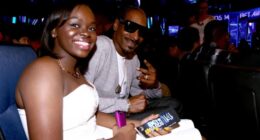Books are my refuge, but I had to overcome dyslexia to write the stories I was bursting to tell

Stories for me have always been an escape. At first it was those written by other people – I slid into them when things in the real world became overwhelming. I can map my childhood through The Secret Garden via A Town Like Alice. As a dyslexic child who struggled to read, I listened endlessly to story tapes from the library, and my tastes were dictated by what was available.
I used the story tapes to block out the small unhappinesses of my life – my loneliness at school, my mother’s long illness. She was one of the first sufferers of ME and for years struggled with exhaustion and depression, plotting her energy levels and despair on graphs, visiting doctor after doctor with increasing desperation. My father, tired himself from a full-time job, often had to look after three angry and confused children. It’s only decades later, as a mother myself, that I can begin to understand how difficult that time must have been for both of them.
Yet for me stories were always my refuge. I learned to live in them and gradually I began to construct my own worlds to escape into. It wasn’t easy. My reading was poor and my writing worse. Often when I sought to connect, the hopeless inadequacy of my dyslexia-riddled writing ensured that no one could read what I’d attempted. Teachers wouldn’t or couldn’t read my stories, simply returning my work scored out with red. Instead of feeling less alone by inviting someone else into my world, I discovered that I’d built another wall around myself in jumbled words. I’d hide at the bottom of the garden, rip up my notebooks, bite at my cheeks and scream.
Yet, somehow, another notebook would find its way into my hands. I couldn’t stop. The compulsion to escape into stories was absolute and to write for myself was not enough. I wanted to find some kind of a readership so as not to feel alone. In my teens I scribbled to stave off depression. If I could write fast enough, conjure another world in which to live, then perhaps, perhaps, I could manage. Sometimes it worked, but now and again it did not, and I ended up in hospital.
My grandfather lived next door and he was a patient listener. I curled up beside his chair and read my stories aloud to him. He became my audience and I wrote for him. When he died he left me an antique writing desk to fulfil my ambition of being a writer. His will was dated when I was 11 and still struggling to write. He had faith in me, even then. His death when I was 20 triggered another bout of depression and several more weeks in hospital. I had to leave university for a year. I watched my friends graduate and wondered how they all managed it.
I must have held inside me some bead of hope as I did get better and black dulled to grey and faded away. My need to write remained. I thought of myself as a writer, even though I was little more than a scribbler. I graduated top of my year and moved to Glasgow to study for a PhD and there I met my first professional writer. A screenwriter, David. I showed him a novel I’d been writing. He was kind, but told me it was hopelessly flawed. I cried until my eyelids bruised. Then I sat down and began another. Twenty drafts and some years later that book was published. I married the screenwriter. When you find someone who gives notes that good, you hang on to them.
Since then, I have lived two lives at once: one in the real world and the other in my imagination. I am happiest at my desk in my study looking out across the hill, although honestly I’m not really there at all. I’m in Italy, I’m 100 years ago, I’m 1,000 years ago, I’m tomorrow. I’m not myself. When a book is finished, I feel a brief passing satisfaction, but mostly I’m bereft and lost. I finish and must begin again. Otherwise, the darkness creeps in.
I trace different versions of myself through the books I’ve written. I find it much more disconcerting than glancing through old photo albums. The books are glimpses of my mind at various stages in my life; versions of a woman I used to be. I can’t stand compliments for my old novels – tell her, not me. I didn’t write it. I don’t feel like her. Our fingers barely touch.
I find the publication process incredibly difficult. Fear lives in my stomach, cold and heavy. I’m at the bottom of the garden again, shredding my notebook. It’s not fear of rejection, but of silence. You are still alone, walled up in your words, unreachable, the silence says. We cannot hear you. We don’t want to.
READ RELATED: Daylight savings time bill: End of changing of clocks may make Americans sicker, fatter, depressed
And yet something with my latest book has shifted. I turned 40 and in the months preceding my birthday I struggled to find my voice. Lost, I found myself looking at pictures of the Mona Lisa suffocating behind her layers of glass in the Louvre, and I realised that I felt like her – not a beautiful woman adored and admired by millions, but a woman locked behind glass, silent and powerless, shouting unheard. Many people comment on how the Mona Lisa looks as if she is just waiting to speak, and I thought what if she is? What if she is shouting but no one can hear her?
A writer without words is a useless, broken thing. Without an escape into stories and my parallel world, I was drowning. The thought of writing I, Mona Lisa, and telling her story was my route back. I decided that I needed to be brave. I wanted to give her a voice so that we could both be heard.
As I read and researched for the book I learned how Leonardo da Vinci told his assistants that they must always try to create a sense of something hidden or held back in their work, to evoke a feeling of the unknown or unknowable possibility. It’s more enticing, Leonardo insisted, when there is the sense of something concealed rather than displaying everything to the observer with absolute certainty. The viewer must fill in that hidden piece with a part of themselves.
That unknowable part of the Mona Lisa is what we’ve been bringing to her as we’ve looked at her over the past 500 years. The secret isn’t only hers, it’s ours as well, and it’s different for every single viewer. Writers rely on a similar interplay between text and reader, and Leonardo’s philosophy resonates with my own idea of storytelling and creativity. It’s the uneasy truth about writing that not every reader will connect with it, and when they don’t the feeling is of failure and the silence echoes.
Yet, writing this book, I am not quite so alone. The Mona Lisa and Leonardo da Vinci have acted as unexpected and joyous companions and conduits.
I’ve spoken to so many readers about the Mona Lisa. They’ve expressed huge interest towards the subject as well as sharing their own personal experiences of seeing the painting. Plenty have admitted their disappointment – wading through crowds with high expectations to be greeted by a small, dark picture before being hurried on by Louvre guards. Yet, there was also the vicar who told me how he cried when he finally saw her in Paris for the first time – not out of disappointment but in rapture. Then there was the older gentleman who remembered seeing her back in the 50s when she wasn’t yet behind glass and there were few other onlookers. Now, he finds himself thinking about her more and more, as he does about dear departed friends.
One of the unexpected pleasures of all this has been learning to see the Mona Lisa again – to see beyond the memes and the tat and marvel at Leonardo’s portrait again. What I’ve also discovered is that while I’m talking about the Mona Lisa behind her wall of glass, I no longer feel so trapped behind my own.
I, Mona Lisa by Natasha Solomons is published by Hutchinson Heinemann at £14.99. Buy a copy for £13.04 at guardianbookshop.com
Source: Health & wellbeing | The Guardian





